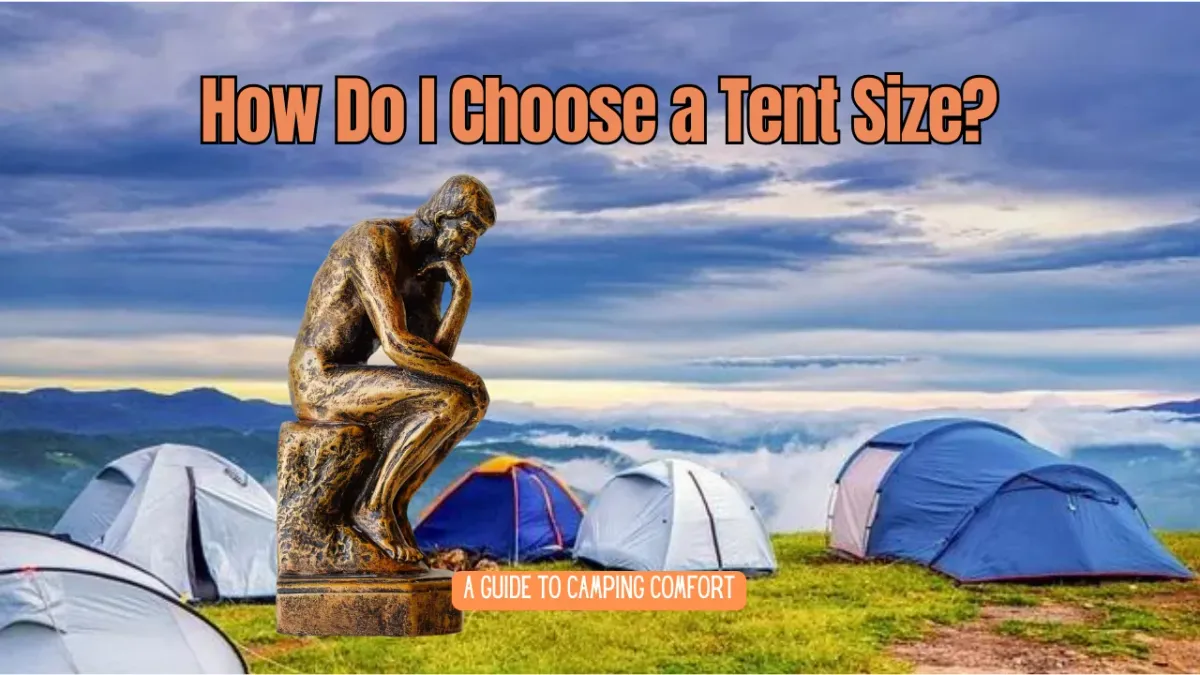When planning a camping trip, one of the most crucial decisions you'll face is choosing the right tent. It's not just about the number of people you're camping with; it's about comfort, space, and functionality. In this comprehensive guide, we'll explore whether a 6 or 8 person tent is the right fit for your outdoor adventures.
Key Takeaways:
- Understand the differences between 6 and 8 person tents in terms of space, comfort, and utility.
- Learn about the factors to consider when choosing between these tent sizes, including the nature of your camping trip and the needs of your group.
- Discover practical examples to help you make an informed decision for your next camping experience.
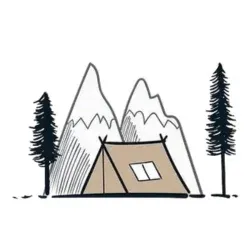
Assessing Your Camping Needs
Before diving into the specifics of tent sizes, it's essential to evaluate your camping needs. Are you heading out for a weekend of car camping with the family, or are you planning a week-long stay in the great outdoors? The duration and nature of your trip will significantly influence the size of the tent you'll need. For instance, family tents designed for car camping can afford to be larger and heavier, as you won't be carrying them long distances, unlike backpacking tents.
When considering tent body and tent walls, think about the living space you'll need. Will you be spending a lot of time inside due to cold weather or inclement weather? If so, a bigger tent with nearly vertical walls might provide more comfort. On the other hand, if you're planning to be outside most of the time, a smaller tent might suffice.
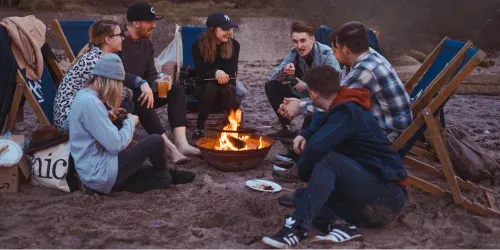
Tent Capacity and Comfort
The tent capacity listed by manufacturers is often based on the number of sleeping bags that can fit side by side, without accounting for personal belongings or extra space for moving around. A six person tent might be comfortable for four adults, while an eight person tent could be the perfect tent for a family of five, providing enough room for sleeping arrangements and gear storage.
However, it's not just about the number of people. Think about the floor space and whether you'll need room dividers for privacy or extra features like multiple rooms. Larger tents often come with the luxury of living space that can keep kids entertained during downtime or provide a communal area for socializing.
Size Matters: 6 vs. 8 Person Tents
When it comes to tent sizes, a six person tent is generally more compact and easier to manage than an eight person tent. It's a suitable choice for smaller families or groups who prioritize a balance between space and convenience. On the other hand, an eight person tent offers more than enough room for larger groups or those who prefer extra comfort and space for storing gear.
The choice between a six or eight person tent also affects the setup time. Dome tents and instant tents in the six-person range can be quicker to pitch, while larger tents, especially cabin style tents with near vertical walls, might require more time and effort.
Space Utilization
The layout of a tent can significantly impact how space is utilized. Taller tents with nearly vertical walls, like many cabin style tents, offer more usable living space and make it easier to move around inside. This can be a game-changer for longer camping trips where you might encounter high winds or rain and need to spend more time inside the tent.
Conversely, dome tents, which often have sloping walls, might offer less usable space but can be more resistant to inclement weather. The dome shape helps deflect wind and rain, making them a practical choice for camping in unpredictable conditions.

Versatility and Layout of Family Tents
When pondering over the question, "Should I get a 6 or 8 person tent?" consider the versatility and layout of family tents. A cabin style tent often provides near vertical walls, maximizing the usable space and creating a homely feel. This design is ideal for families needing enough room for sleeping arrangements and gear storage. With multiple rooms and room dividers, these large tents offer privacy and organization, keeping the entire family comfortable and kids entertained even during extended stays in the great outdoors.
Family camping tents come in various layouts, and the dome tent is another popular choice. Its dome shape naturally deflects wind, making it suitable for camping in areas with high winds or inclement weather. While smaller tents might only have one door, larger models often feature two doors, reducing nighttime disruptions. Additionally, the curved walls of dome tents can limit floor area, but they often include extra features like a rain fly that extends over the entrance, providing a dry space for storing gear.
Tent Size and Environmental Adaptability
The size tent you choose should also be rated for the environmental conditions you expect to encounter. A tent with a full-coverage rain fly and sturdy guy lines is essential for withstanding rain and high winds. If you're camping in cold weather, look for tents with a smaller volume to retain heat better, while larger tents with ample square footage and large doors are preferable for hot climates to ensure ventilation.
Moreover, the tent's adaptability to different terrains can be a deciding factor. A family tent with a robust floor and reinforced seams can handle rougher ground, while tents with a high ceiling and vertical walls are more comfortable for standing and moving around in. When considering tent size, think about the extra room you'll need for comfort and the extra features that can make your camping experience more enjoyable. For instance, a tent big enough to allow for separate sleeping and living areas can make a significant difference in your outdoor adventure.
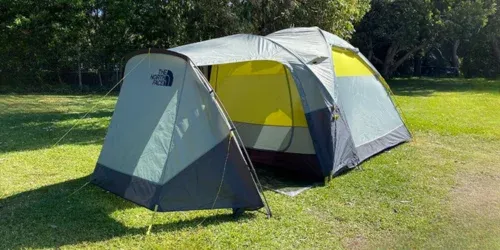
Tent Features and Enhancements
When selecting the perfect tent, extra features can make a significant difference in your camping experience. For instance, a tent with a rain fly that extends over the door can keep the interior dry during inclement weather. If you're considering an 8 person tent, look for one with large doors and a dome shape to facilitate easier movement and better withstand high winds. These features are not just about comfort; they're about ensuring your tent can handle whatever nature throws at it.
On the other hand, if you're leaning towards a 6 person tent, prioritize options like a quality rain fly, ample guy lines, and a sturdy frame to combat cold weather and high winds. Even in smaller tents, features such as two doors can prevent you from stepping over your fellow campers during nighttime excursions. It's these thoughtful additions that can enhance your camping experience, whether you're storing gear or keeping the kids entertained inside the tent on a rainy day.
The Great Outdoors and Group Dynamics
When selecting between a six or eight person tent, consider the dynamics of your group. If you're camping with children, a larger tent with multiple rooms can provide separate sleeping spaces and a common area for games and activities. This can keep the entire family happy and entertained, even when confined to the tent due to bad weather.
For adult-only groups, the extra room in an eight person tent can be used for additional comfort, such as larger sleeping bags, extra gear, or even a small table and chairs for indoor relaxation.
Weather Considerations
Weather plays a significant role in choosing the right tent. If you're expecting cold weather, a smaller tent might retain heat better, making it a cozier option. However, for camping in warmer climates, a larger tent with more ventilation options, like large doors and windows with mesh screens, can provide better airflow and keep the interior cool.
In areas prone to high winds or heavy rain, look for tents with a sturdy frame, rain fly, and guy lines to ensure stability and dryness. The right tent fabric can also make a difference; canvas tents, for example, are known for their durability and weather resistance.

Portability and Setup
If you're planning to move your campsite frequently or hike to your destination, the weight and portability of your tent become more critical. Six person tents are typically lighter and more compact than their eight person counterparts, making them a better choice for backpacking tents or situations where you need to carry your outdoor gear over longer distances.
However, if you're car camping and won't be moving your tent around much, the extra weight of an eight person tent won't be as much of an issue. In this case, the additional comfort and space might be worth the trade-off.
Longevity and Investment
Investing in a tent is not just about your immediate needs. Consider the longevity of the tent and how it will serve you over time. If you anticipate your family or camping group growing, opting for an eight person tent might be a wise long-term investment, providing enough space for future camping trips.
On the other hand, if you prefer solo trips or small group outings, a six person tent could be more practical and cost-effective. It's also worth considering whether you might benefit from owning multiple smaller tents for different types of trips, rather than one large tent.
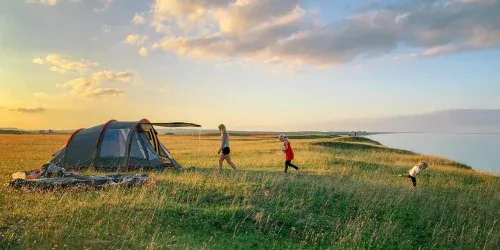
Summary
Choosing between a six or eight person tent boils down to your specific camping needs, group size, and the nature of your trips. A six person tent offers a balance of space and manageability, ideal for smaller groups or those who prioritize ease of transport. An eight person tent provides more room and comfort, perfect for larger groups or families who need extra space for living and gear storage. Consider factors like weather, portability, and future camping plans when making your decision.
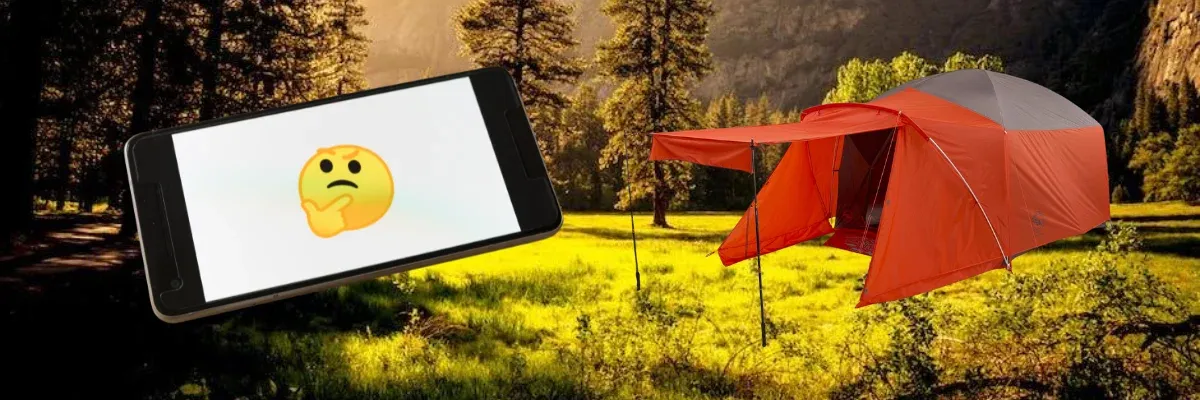
FAQs
Q: What features should I look for in a family tent?
Key features to consider include: weather resistance, ventilation, room dividers, storage pockets, and ease of setup.
Q: Are larger tents harder to set up? A: Larger tents, such as 8 person tents, can be more complex and time-consuming to set up due to their size and structure. However, many are designed with features like color-coded poles and quick-clip systems to simplify the process.
Q: Can a 6 person tent comfortably fit 6 adults? A: While a 6 person tent can technically fit 6 adults, it's often more comfortable for 4 adults, allowing extra space for personal belongings and movement within the tent. Always consider the actual floor area and peak height when assessing comfort for your group size.
More about tent sizing:
